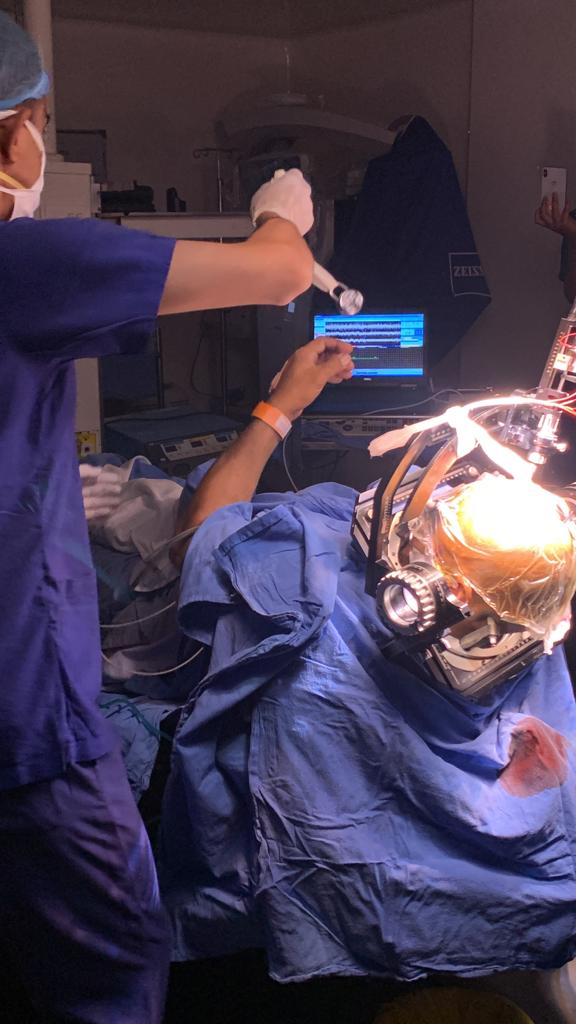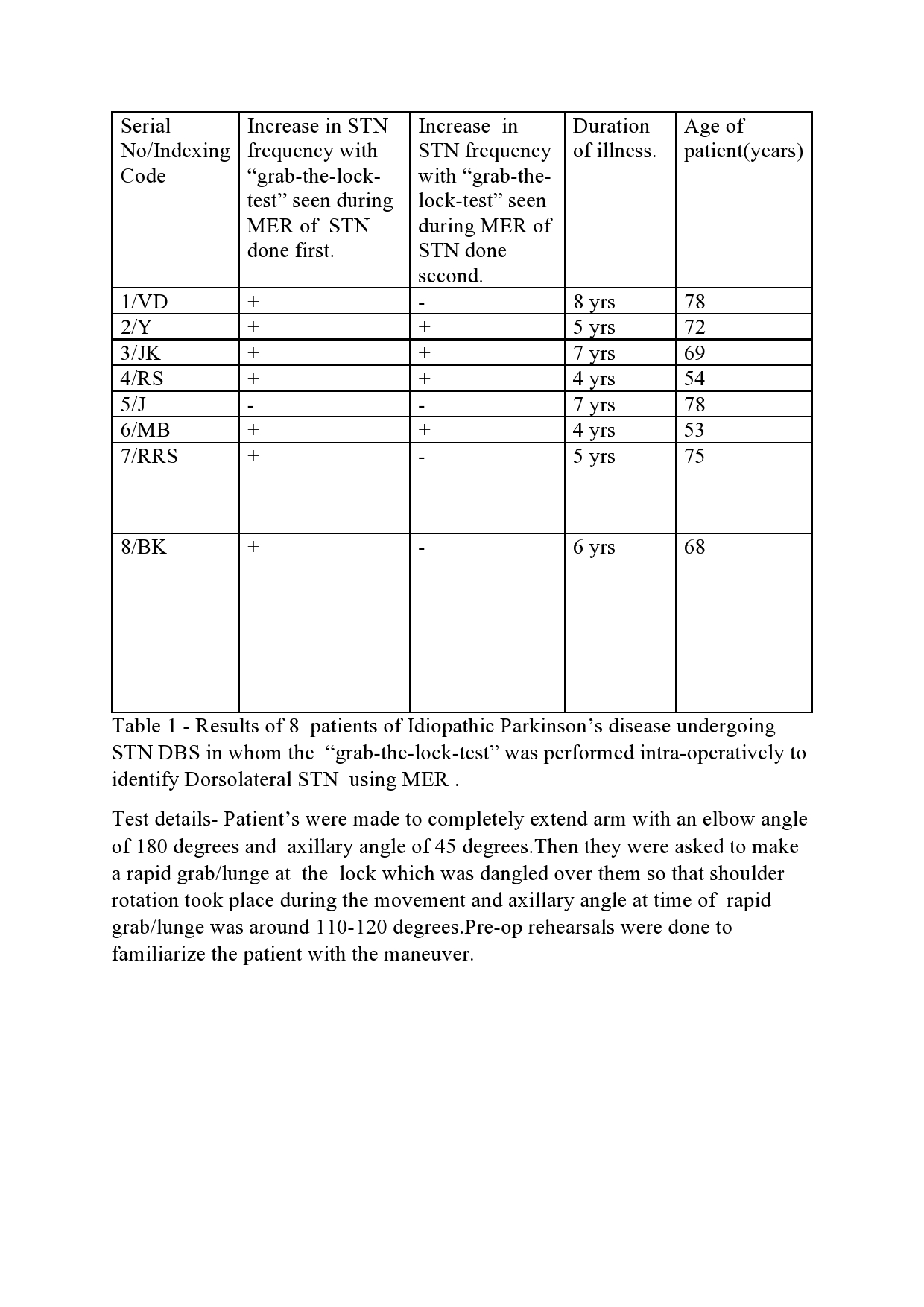Category: Surgical Therapy: Parkinson's Disease
Objective: The target during STN DBS for Parkinson’s disease is the dorsolateral STN which plays a major role in motor functions in contrast to the venteromedial STN which has limbic functions. Our aim was to increase this targeting accuracy
Background: Identification of dorsolateral STN can be done via pre-operative high resolution imaging and via MER based software algorithms like HaGuide algorithm. However these methods have technical and logistic limitations. To improve dorsolateral STN targeting , we aimed to develop a novel test which can be used intra-operatively
Method: This test is based on following STN MER data findings -Firing frequency of dorsolateral STN neurons increases during the reaching phase of reach to grasp movement and this increase correlates positively with velocity of movement.1 Increase in firing frequency of STN neurons was seen more commonly with shoulder movement as compared to elbow , wrist or hand movement with percentage of neurons showing increase being 43%, 31%, 13% and 13% respectively.2Also joint rotation was the movement which led to biggest increase in firing frequency of STN neurons.2 Test details- Patient’s were made to completely extend arm with an elbow angle of 180 degrees and axillary angle of 45 degrees.Then they were asked to make a rapid grab/lunge at the lock which was dangled over them so that shoulder rotation took place during the movement and axillary angle at time of rapid grab/lunge was around 120-130 degrees.Pre-op rehearsals were done to familiarize the patient with the maneuver.Fig 1.
Results: 16 STN’s were sampled and 11 STN’s demonstrated visible increase in firing frequency with this maneuver [68.75%] -Table 1. Out of 5 STN’s which did not show visible increase in firing frequency , 4 were STN’s whose DBS was done second
Conclusion: Our test showed 68.75% accuracy for correct identification of dorsolateral STN during DBS. This allows more accurate lead placement and better results. Since in our centre, both leads were being implanted on same day ,likely reasons for lower pickup rate of this maneuver with second STN lead were- patients getting tired and fatigued and not executing the maneuver correctly during second STN lead implantation , pneumocephalus and anesthesia effects. More studies using this test will clarify better.
References: 1.Pötter-Nerger M, Reese R, Steigerwald F, Heiden JA, Herzog J, Moll CKE, Hamel W, Ramirez-Pasos U, Falk D, Mehdorn M, Gerloff C, Deuschl G, Volkmann J. Movement-Related Activity of Human Subthalamic Neurons during a Reach-to-Grasp Task. Front Hum Neurosci. 2017 Sep 7;11:436. doi: 10.3389/fnhum.2017.00436. PMID: 28936169; PMCID: PMC5594073.
2.Delong MR, Georgopoulos AP, Crutcher MD, Mitchell SJ, Richardson RT, Alexander GE. Functional organization of the basal ganglia: contributions of single-cell recording studies. Ciba Found Symp. 1984;107:64-82. doi: 10.1002/9780470720882.ch5. PMID: 6389041.
To cite this abstract in AMA style:
A. Panwar, N. Sawal, M. Matta. “Grab-the-lock test “ – A novel clinical test for identification of dorsolateral Subthalamic nucleus [STN] during deep brain stimulation [DBS] [abstract]. Mov Disord. 2023; 38 (suppl 1). https://www.mdsabstracts.org/abstract/grab-the-lock-test-a-novel-clinical-test-for-identification-of-dorsolateral-subthalamic-nucleus-stn-during-deep-brain-stimulation-dbs/. Accessed December 20, 2025.« Back to 2023 International Congress
MDS Abstracts - https://www.mdsabstracts.org/abstract/grab-the-lock-test-a-novel-clinical-test-for-identification-of-dorsolateral-subthalamic-nucleus-stn-during-deep-brain-stimulation-dbs/


